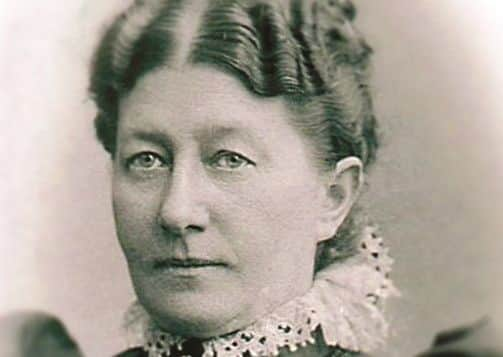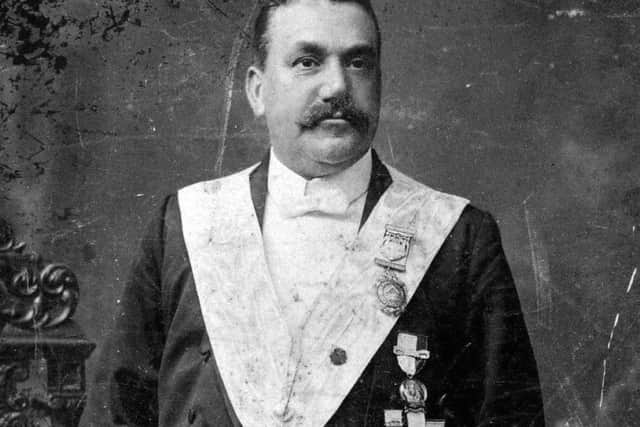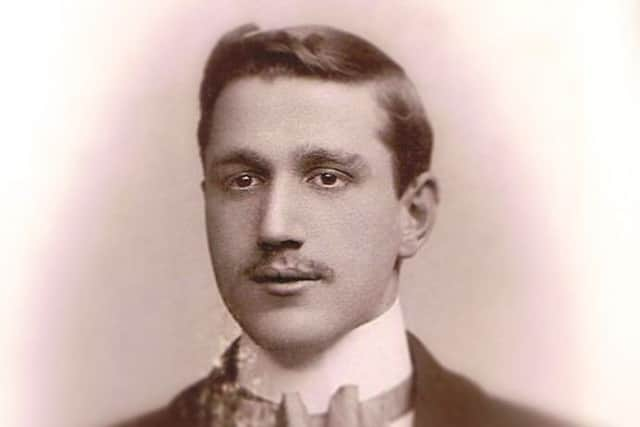How relative of TV star Jenna Coleman got into trouble with the law


In early 1902, Peter married a lady named Jane Wearing at Holy Trinity Church, Preston, and the couple had a daughter who they called Mary Ellen, but Jane left with the baby soon afterwards, starting a new life elsewhere.
In 1911, Peter Bassett was enumerated in the census at 8 Back Silver Street, Preston, when he was recorded as a boarder in the home of none other than married woman, Nancy Waddicar, who had separated from her husband, Thomas, some time after 1907. It was Peter who completed the census form on behalf of Nancy, stating they were both married, just not to each other.
Advertisement
Hide AdAdvertisement
Hide AdNancy’s four children were also present at the address on census night: Annie and Helen Bradshaw, aged 10 and six, who were born before their mother had married, and Mary and Lily Waddicar, aged three and 11 months respectively. Peter was apparently masquerading as Thomas Waddicar at this time for in February 1911, he and Nancy had taken Lily to be baptised at St James’s Church, Preston, when they gave their names to the priest as Thomas and Nancy Waddicar of 8 Silver Street, even though Nancy’s husband had never lived at that address.


The real Thomas Waddicar was a ‘weak-minded’ career criminal, with a string of convictions and a host of aliases. Thomas had led a very troubled youth. As a boy he received three strokes from a birch rod for stealing sweets and when he failed to change his ways he was sent to a reformatory school for eight years. During the next three decades he was in and out prison, usually for stealing, though he had 11 convictions for ‘exposing his person’.
Thomas was sent to prison for a year in August 1907, shortly after Nancy married him, this time for stealing three pairs of trousers. Just weeks after his release in 1908 he was convicted again, this time for stealing 14 lbs of lead, receiving a three-year sentence. He left prison on 14 March 1911, in time for the census, but a whole month after the baptism of Lily. So, not only did his incarceration mean Thomas was absent from Lily’s baptism, it also meant he was highly unlikely to have been present at the conception!
Thomas went back to live on Albert Street, Preston, where he could be found in the census; and as Back Silver Street and Albert Street were only a few yards apart it’s probable Thomas Waddicar and Peter Bassett were known to one another. Perhaps they’d once shared a cell!
Advertisement
Hide AdAdvertisement
Hide AdIn 1914, Jenna’s great-grandfather, Peter Waddicar, was baptised at St James’s Church, followed by his brother Robert in 1916, and on both occasions the parents gave their names as ‘Peter and Nancy Waddicore’, Peter having now assumed a combination of both identities at once. When Robert died from his fall in 1938, a notice in a local newspaper described him as ‘the beloved son of PETER and NANCY WADDICAR’.


And in 1918, to complicate matters further, Jane Wareing, who Peter Bassett had married in 1902, was prosecuted for bigamy.
The Preston Herald of 9 February reported that Bolton magistrates had committed one Mrs Jane Bassett, a housekeeper, for trial at Manchester Assizes ‘upon a charge of bigamy’. The article explained that in 1915 Jane and a soldier, Private Simpson of the Lancashire Fusiliers, had gone through a ‘form of marriage’ at Bolton Register Office when the bride had identified as a widow. Jane told the court she did not know Peter was still alive when she married the soldier.
The prosecution, however, explained that she could have quite easily found him at Back Silver Street, where the pair and their child had lived for nine months following their marriage in 1902, and where Peter had resided continuously ever since; indeed he and Nancy were still at Back Silver Street at the time of the 1939 National Register. Peter Bassett was even called to give evidence and produced the 1902 marriage certificate as proof that Jane’s 1915 marriage was bigamous, though he said nothing of his relationship with Nancy!
Advertisement
Hide AdAdvertisement
Hide AdPeter would make further appearances in court, but as the accused. He’d been jailed again in 1908 for breaking into a Cooperative store in Preston, making away with 93 copper check valves and ½lb of tobacco; and in 1926, he was convicted of stealing a large quantity of coal from a railway company, for which he was fined. He died in 1940.


On the paternal side of Jenna’s family tree is her grandfather’s mother, Dorothy Alma Coleman, née Williams. She was the daughter of John Wakefield Williams (1880-1959) and Alma Elizabeth Williams, née Kirkby (1879-1956). John worked as a motor engineer, and Alma ran a grocery shop from the family home on Leytonstone Road, West Ham.
John’s father, Henry Williams (1852-1924), had also been in trade, carrying out various occupations during his life. He’d been born in January 1852 at 5 Verulam Buildings, Grays Inn Road, London. Verulam Buildings still stand today, No 3 being chambers for barristers specialising in commercial law.
Henry, who was Jenna’s great-x3-grandfather, married Hannah Maria Pattison (1847-1924) in London in 1877, and they soon moved to West Ham where Henry carried on as a shirt-maker. He was later recorded as a hosier, hairdresser, outfitter and clothier, and for a time the family relocated to Rolleston-on-Dove, a village in Staffordshire.
Advertisement
Hide AdAdvertisement
Hide AdHannah, Henry’s wife of almost 50 years, died in the summer of 1924, and a few months later, in the October, Henry married again to a 65-year-old spinster, Eliza Lamberth, who had cared for the ailing Hannah during the final years of her life. Henry passed away in December, soon after the October wedding.


Perhaps unsurprisingly, the Williams family can be traced back to Wales within two generations.
Henry’s father, Richard Williams (1816-1877), was born in Edmonton, London, in December 1816, where he was baptised a month later. He worked as a groom and later a fishmonger; and following his marriage to Henry’s mother, Jane Spurr, in 1839, was living at Verulam Buildings in 1851.
A small piece of information found in Richard’s 1817 baptism entry reveals an remarkable coincidence.
Advertisement
Hide AdAdvertisement
Hide AdThe occupation given for Richard’s father, Welsh-born Owen Williams, was ‘Butler to Mr Peel’ and the family abode was recorded as Bowes Farm.
This farm, which was located off Bowes Road in modern-day Bowes Park, London, was home to Joseph Peel, who was the uncle of a certain future Prime Minster, Sir Robert Peel (1788-1850).
Peel, famous for establishing the Metropolitan Police in 1829, is, of course, a major character in ITV’s Victoria, starring Jenna Coleman.
This article first appeared in issue seven of Discover Your Ancestors, available now in larger newsagents and at www.discoveryourancestors.co.uk